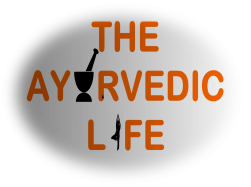 Semiya upma is one of those quick fixes in my kitchen – nutritious, loaded with fresh vegetables, and extremely easy to make! Semiya (a.k.a. vermicelli) is roasted with grated (or finely cut) vegetables like carrots, zucchinis, spinach, potatoes etc.in aromatic, digestive spices and ghee and finally cooked with hot water, to make this beautiful dish within minutes.
Semiya upma is one of those quick fixes in my kitchen – nutritious, loaded with fresh vegetables, and extremely easy to make! Semiya (a.k.a. vermicelli) is roasted with grated (or finely cut) vegetables like carrots, zucchinis, spinach, potatoes etc.in aromatic, digestive spices and ghee and finally cooked with hot water, to make this beautiful dish within minutes.
Ingredients (serves 3):
- Vermicelli (semiya – pre roasted) (1.75 cups)
- Grated vegetables (Carrots, zucchinis, spinach) (2 cups)
- Ghee (1.5 tsp)
- Mustard Seeds (3/4 tsp)
- Split Black Gram (Urad) Dhal (1.5 tsp)
- Dry red chilly (1 broken or per taste)
- Curry leaves (6-10 or as available)
- Asafetida (hing) (1/4 tsp)
- Water (for cooking) (slightly less than double the quantity of semiya – so, approximately 3.25 cups)
- Lime/lemon juice (1 tbsp or per taste)
- Grated coconut (optional – for garnish) (1 heaped tbsp)
- Coriander leaves (finely chopped – for garnish) (1 tbsp)
- Salt (to taste)
Method:
- If you don’t have pre roasted vermicelli, dry roast it on medium heat until you get a nice aroma of the vermicelli roasting. Be careful not to burn the semiya.
- Place water in a pot and start heating it on medium. Keep watching this occasionally, while starting to work on the next few steps.
- Heat ghee on medium in a pan and add mustard seeds, when the ghee is hot.
- When the seeds splutter, add urad dhal and saute till it starts changing color. Add red chilly, curry leaves and asafetida. (At this point, it is worth mentioning that there are many variations. You can add ginger, green chillies, onions, and tomatoes also). You want the urad dhal to turn a golden brown color, not black, so ensure that you work quickly in this step.
- Add the grated vegetables and saute for a minute or so.
- Add the roasted semiya to the vegetables now. Saute for 30 seconds or so.
- Add the heated water to the semiya. You may want to do so little by little at a time to ensure that you don’t add too much water. Add enough water so as to cover the semiya by a millimeter or so and cook covered on medium heat.
- Checking occasionally to ensure that the semiya doesn’t lose too much water and get burned, keep stirring and add more water, if necessary.
- After 5-6 minutes, you will notice that the semiya is almost cooked and there is some excess water here and there. Cook uncovered, stirring occasionally. Switch off the flame, when you notice that most of the water has evaporated.
- Garnish with finely chopped coriander leaves, grated coconut and lime/lemon juice.
- This can be a great lunch box recipe, especially on days when you are running late, but still don’t want to compromise on health or taste! Here, I’ve paired semiya upma with garbanzo beans sundal for the kids’ lunch and strawberries for snacking during first recess.
Tastes (Rasa):
Sweet (semiya, ghee, carrots), sour (lemon), salty (salt), bitter (curry leaves, spinach), pungent (chilly, mustard), astringent (asafetida, zucchini).
Doshic Influence:
Semiya is wheat, which can tend to be kapha and vata aggravating due to its qualities. Pittas can digest wheat well, provided they have strong digestive fires. Spices used are warming, not overly heating, hence balancing the kapha coldness, and enhancing digestibility, without aggravating pitta e.g. asafetida, curry leaves. Mustard seeds and red chilly should be used in moderation for pittas though. Ginger, green chillies, tomatoes, if used, should be done so in moderation or totally avoided for pittas and during the hot summer months. Ghee is tridoshic and great for digestion and general nourishment. Overall, this recipe with its balanced ingredients can be made in a tridoshic manner – for kaphas, include pungent spices like mustard seeds, curry leaves, and even ginger and green chillies, for pittas, go easy on the pungent spices (lemon juice is great even though it is sour), and for vatas, make sure that the semiya is well cooked and enough digestive spices like asafetida, ginger etc. are added.
Effects on the Mind (Gunas):
The spices used in the above recipe are largely sattvic i.e. mild, flavorful and digestive. There is a good balance of all 6 tastes in this dish and it definitely has no overtones of saltiness, pungency or sourness. If made using fresh ingredients, this would count as a fairly sattvic recipe.



good tiffen box receipe.thanks
You are welcome, Indumathi! It definitely is an easy-to-make, healthy and tasty treat for the kids. I am so glad you liked it. Thanks for writing in!